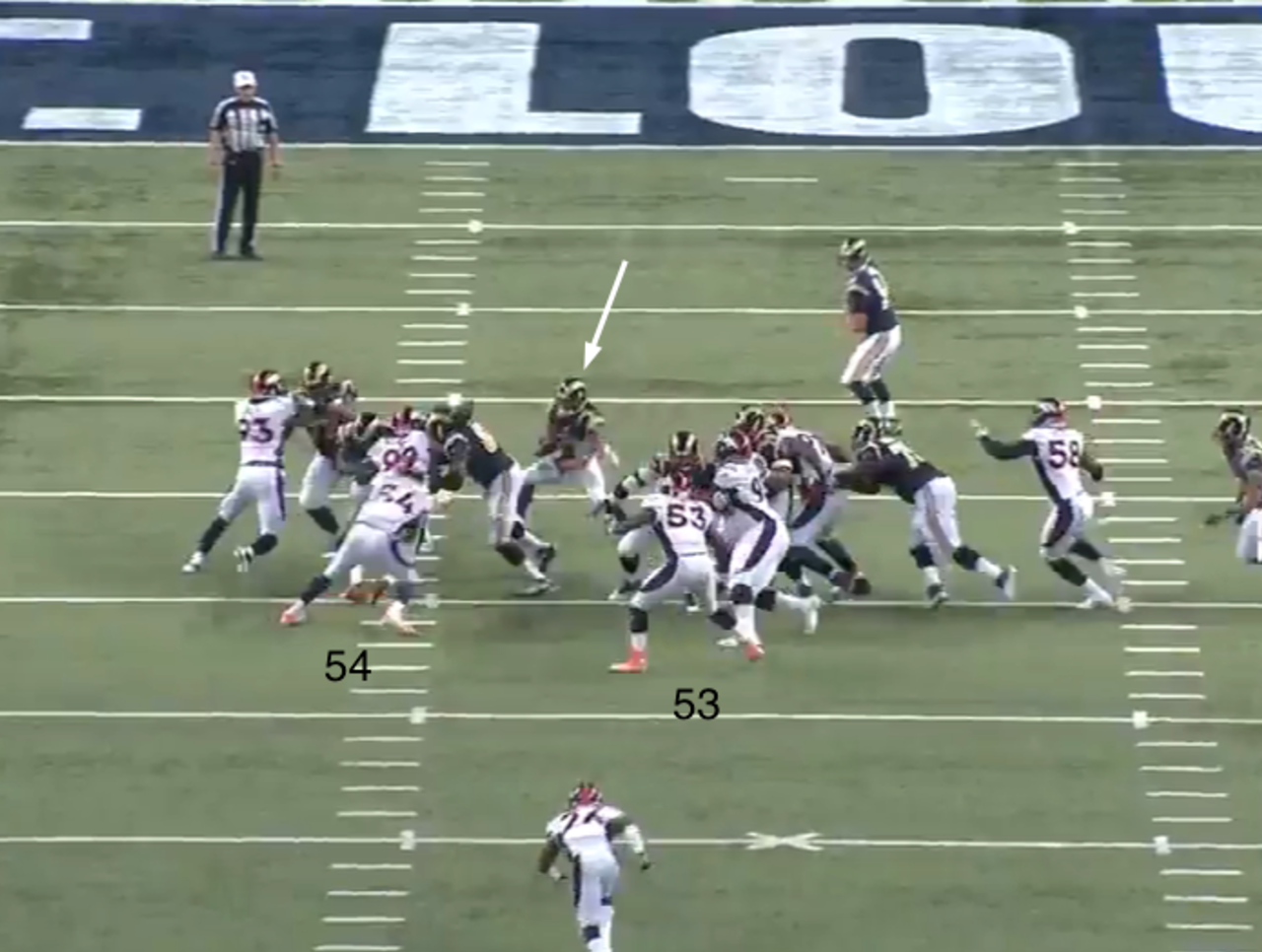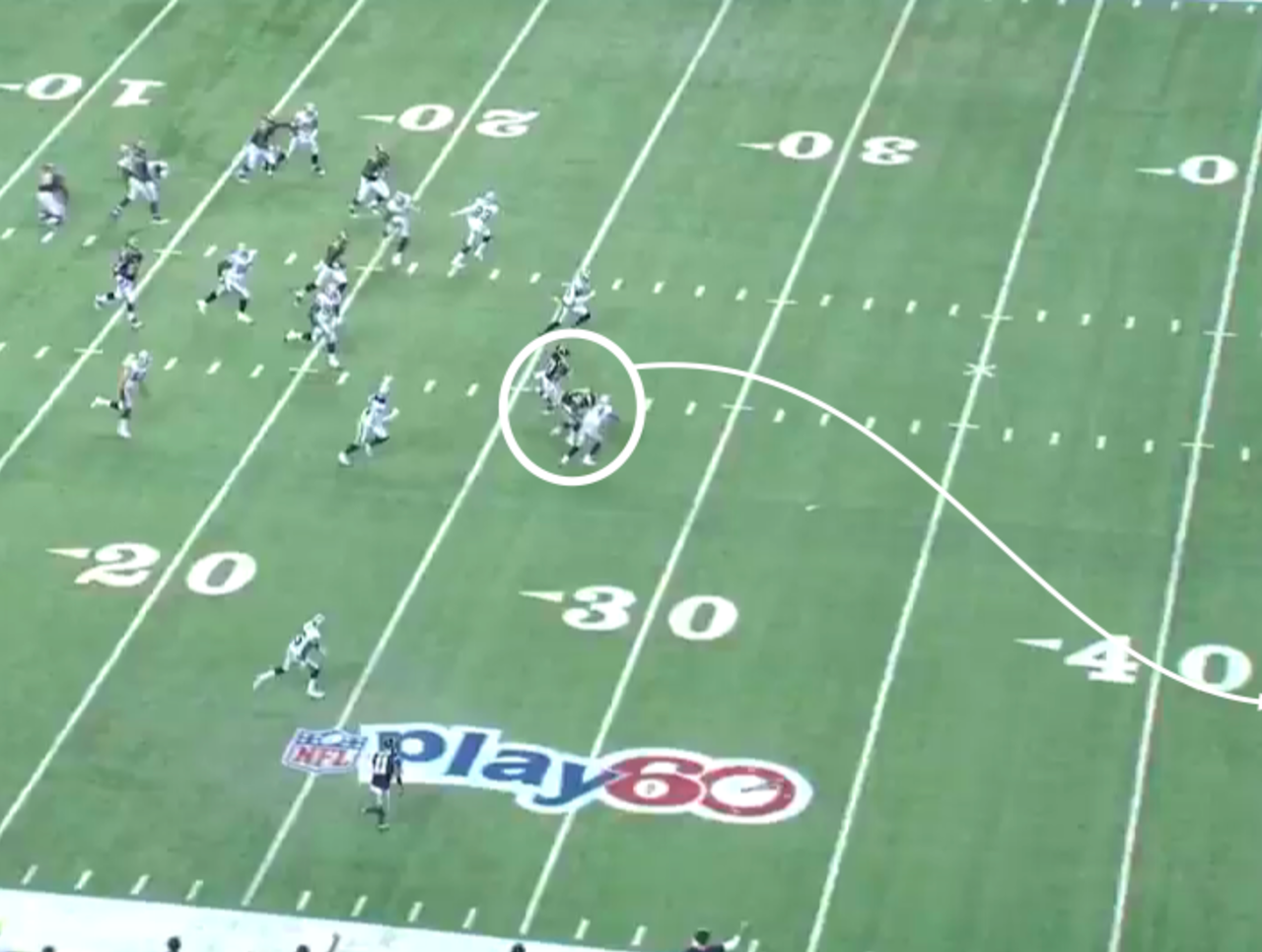Film Room: Rams' Tre Mason learning on the job
Running backs are most dangerous when they are rookies. They don’t know where to run with the ball yet. All they know is to run with speed and instincts. Ask one why he made the cut that he did and he’ll find it unexplainable. He will say that he just did it.
That’s the kind of runner Tre Mason is. He was drafted in the third round of the 2014 NFL Draft and sat the first five weeks of the season. All Mason could do was look down at his feet and imagine all the big plays he could have been making. The St. Louis Rams coaches couldn’t picture the same, though. They didn’t think he was ready yet.
Now, 14 weeks into the season, they are relying on Mason to move the offense.
Excessive Steps
Mason has a natural feel for the cutback lane. Yet, like many other rookies, he has a bad habit of bouncing runs outside when he shouldn’t. It makes it tough on his offensive line to execute blocks and even tougher for him to pick up four or five yards consistently.
In Week 11 against the Denver Broncos, Mason ran laterally on a lead play to the right toward an alley that had developed to the inside of the center.
The center helped double-team the nose tackle and worked his way up to the middle linebacker (53). For him to seal the middle linebacker, who flowed toward the left hash and toward Mason, he needed time to peel off of the block on the nose tackle. The only way that could happen was if Mason approached the alley patiently.

If he was more experienced, perhaps Mason would have opened his hips outside to freeze the weak-side linebacker (54), who should have been blocked by the fullback. That would allow the center to climb to the middle linebacker. Then Mason could burst through the tunnel.
He was noncommittal, however. Instead of hitting it for a five-yard gain, if not more, he widened outside, swerving around the right tackle and the receiver. A Broncos cornerback threw him down after four yards.
One week later, in Week 12 against the San Diego Chargers, excessive steps were again a problem when the Rams dialed a zone-stretch play and Mason ran left.
It was a quick-hitting play designed for the running back to read the flow of the nose tackle (98) and where the center and right guard blocked.
If the nose tackle played down the line of scrimmage and allowed the center to ride him, the running back would hit just inside of the block, storm downhill and then again hit just inside of the right guard’s block on the inside linebacker (56).

When the center slammed into the space-eating nose tackle, Mason saw the hole. His shoulders were tilted and he had a forward lean. He was in position to pick up a chunk of yards. But he hesitated. He jabbed from his right foot to his left. It slowed the play, and what looked like a healthy half-dozen yards evaporated into half of that when the defensive end shed the guard, leaned in and swallowed Mason.
Cutting with Purpose
In the same game against the Chargers, Mason also showcased his natural skills combined with what he had learned over the course of the season.
It was a first-and-10 power play when Mason took a handoff to his left and followed the right guard. The guard was the lead blocker from the back-side, where the rest of the offensive line had collapsed down. The left guard and left tackle pushed a defensive end to the inside, creating a gaping hole in between them and the fullback. That hole was for the right guard to power through and destroy an inside linebacker (53).

What Mason was left to do was to patiently cut to the inside of the right guard’s block. He gracefully widened his base with one step, then cut with another. Then he sank his hips and lowered his shoulder pads. Once he got to the second level, he squared his shoulders and burst inside of the tight end’s block. He lowered his shoulder and powered through the third-level safety (32) before being tackled after a 13-yard gain.
Although they were different types of plays, the two runs against the Chargers should have had similar results. Mason has to identify developing blocks and follow them consistently, especially on plays that are designed to hit a particular gap.
Mason’s gotten better at this since his days at Auburn University, where he rushed for 23 touchdowns and more than 1,800 yards in his final season, and it shows. There have been multiple carries this season where he has attacked the correct holes or made cutbacks when necessary.
Against the Oakland Raiders in Week 13, he had a career-high 117 rushing yards. Most of them came on an 89-yard breakaway that happened in the second quarter.
Mason stepped diagonally to his left to take the zone-stretch handoff. That shifted the middle linebacker (56) over. The strong-side defensive end (96) was held back by the quarterback’s bootleg. The outside linebacker (55) ran toward a tight end in the flat.

With the edge inhabited by defenders and the interior ready to be blown up, Mason stomped his left foot in the ground and then his right and leaned right to a cutback lane behind the right tackle. He sank his hips and burst past the defensive end, then the middle linebacker, weaved outside the hash and followed the fullback who led the way.

Out in the open field a safety (29) came forward, but Mason cut back again, this time tighter to the near hash to set up the fullback’s block. After the safety was obliterated Mason widened back outside and set up two more blocks by the outside receiver who ran downfield with him and sprung him for the score.
It was the biggest play of his young career. It was the kind of play that Mason imagined while on the sideline.